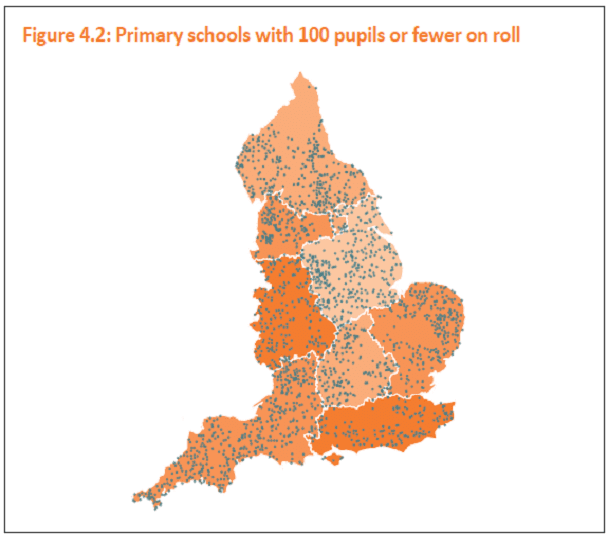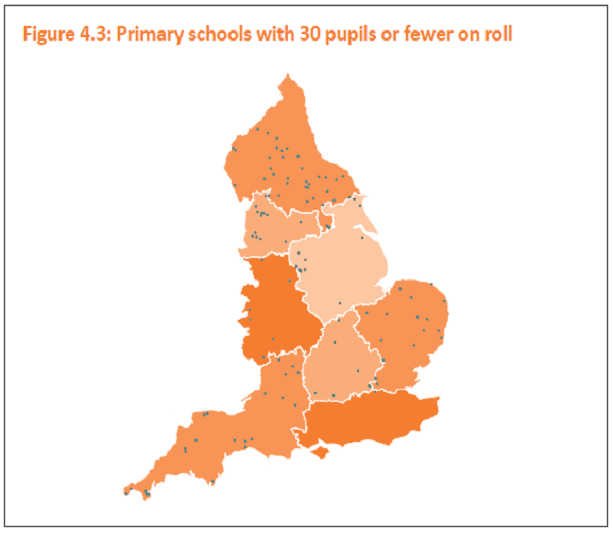In part 1, I outlined some major changes to the way in which individual Academies are governed, to maintain a formal parental role both for the process of converting to an Academy, and also ongoing oversight. Below, I want to touch on some wider issues that need to be addressed during this shift to universal Academisation.
Firstly, schools switching between chains. In Primary Focus we were absolutely explicit that needs to be able to happen. The rationale (p58) was
“It is highly likely that of the significant number of new chains, a proportion will be ineffective, poor value for money, or both. Any system needs a way of ensuring continual oversight over aspects of poor performance….It is implausible, however, that even an increased number and capacity of…the RSCs…will ever have the bandwidth to adequately scrutinise the large numbers of primary chains that will spring up under their remit…nor would a system that did have adequate capacity to manage so many schools via a top down process be optimal from the purpose of wanting to see a self-improving system, given the significant bureaucracy and oversight which would be required. Instead, this report argues that chains should principally be held accountable by their member schools…an individual school holding a right to exit or secede, even if rarely activated, would act as a vital check and balance on chains, and an incentive to keep overall top slices/management charges down, and improving incentives on chains to continue to deliver an excellent service”
We proposed in the report that this power should be held by the individual school governing body – rather than, as the White Paper moots, via a parental petition, which I don’t like. Again, quoting from Primary Focus (p60)
In order to maintain the legal ability to secede, each individual Trust – that is, each individual Academy – would need to keep their own articles of association. Although they would still have to agree (as part of the process of joining a chain) to grant the vast majority of their governance powers to the overall chain, the individual Academy Trust articles should retain two (and only two) powers – the right for that Academy to reappoint governors to the LGB as the single Academy Trust representatives (with proportions and voting powers for local governing bodies as before), and the right those individual Academy Trust representatives, and those alone, to vote on seceding. This would allow, in normal circumstances, for the overall chain to maintain its majority vote across the individual Academy as a whole and with regards to the LGB, to allow normal business to be conducted without a blocking minority. But it would also allow an individual Academy to vote on leaving without the chain itself overruling them, by limiting voting rights only to those legally responsible for safeguarding the interests of the original Academy (the original Trustees)”
In the 18 months since we wrote this, I have had some really interesting conversations with Emma Knights from the NGA, and various education lawyers, about whether this is the best model. In truth, I can see some weaknesses in it, including; what can trigger the secession, how to balance the interests of a MAT in driving change with the interests of a school; and what to do about reconstituting all Academies currently sitting without legal status in existing MATs. It may also be that in DfE capacity terms, and policy sequencing, it makes sense for government to park this issue for five years whilst it focusses on making universal conversion work and rebrokering failing schools and MATs, and only then return to how other schools can switch voluntarily. But at a minimum, some thought needs to be given now, so that possible avenues are not inadvertently cut off – for instance, ought government to look now to keep some legal status of existing schools within a MAT for all Academies converting under this new process?
Secondly, and again quoting from Primary Focus (p48), we have always been advocates that Local Authorities should be allowed to spin out and become their own MATs:
“Government should allow – and encourage – Local Authorities to set up and run their own chains. Any Local Authorities wishing to do so must itself spin out this chain so that it is legally separate from the remainder of the Local Authority and becomes a “Learning Trust”, and schools in that Local Authority must come out and then opt back in to the Learning Trust should they wish to, rather than being asked to opt out if they wish”
The reasoning is pretty clear – where good people exist in LAs, it would be perverse to not allow them the opportunity to use their existing talents and relationships in the cause of school improvement.
In terms of a model, this comes less from the few instances where this has happened in education (normally because of poor performance – including in Islington, Hackney, Walsall, Bradford and Stoke-on-Trent) and more from how community health services went through the same process under Labour in 2009-2011. Primary Care Trusts were required to spin off their provider arms into independent organisations, and focus themselves on commissioning effective care for their population (where the analogy here is the new LA role focussing on champions for children and maintaining commissioning duties over things like school places and school transport). The result was that around 40% of all community health providers decided to strike out on their own and become mutuals and social enterprises. The remainder were brokered into various other provider organisations, typically for an initial contract length of about three years, and often in a relatively uncompetitive process – either merging into a large acute hospital trust, a mental health trust, or in a small number of instances, contracted to private providers who ran services for profit across a geographical area for the length of the arrangement (and no, to pre-empt the question, I don’t think this last model should be allowed here).
Thirdly, some thought needs to be given to how to handle what are, bluntly, less attractive schools during the transition process. To take a really practical example, there were in 2014 1,975 primary schools with fewer than 100 pupils on roll, and 113 schools with fewer than 30 pupils on roll:



